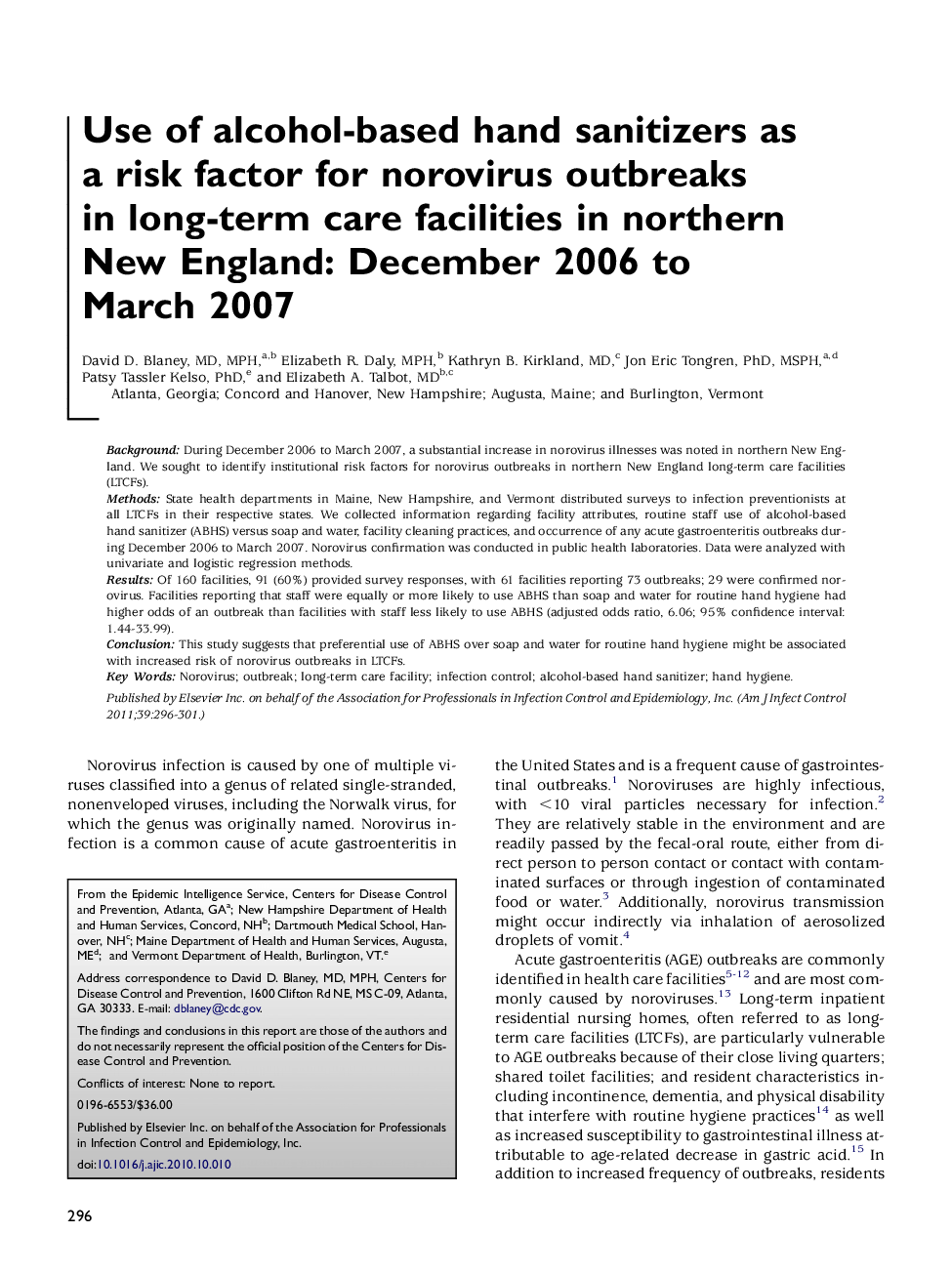| Article ID | Journal | Published Year | Pages | File Type |
|---|---|---|---|---|
| 2638275 | American Journal of Infection Control | 2011 | 6 Pages |
BackgroundDuring December 2006 to March 2007, a substantial increase in norovirus illnesses was noted in northern New England. We sought to identify institutional risk factors for norovirus outbreaks in northern New England long-term care facilities (LTCFs).MethodsState health departments in Maine, New Hampshire, and Vermont distributed surveys to infection preventionists at all LTCFs in their respective states. We collected information regarding facility attributes, routine staff use of alcohol-based hand sanitizer (ABHS) versus soap and water, facility cleaning practices, and occurrence of any acute gastroenteritis outbreaks during December 2006 to March 2007. Norovirus confirmation was conducted in public health laboratories. Data were analyzed with univariate and logistic regression methods.ResultsOf 160 facilities, 91 (60%) provided survey responses, with 61 facilities reporting 73 outbreaks; 29 were confirmed norovirus. Facilities reporting that staff were equally or more likely to use ABHS than soap and water for routine hand hygiene had higher odds of an outbreak than facilities with staff less likely to use ABHS (adjusted odds ratio, 6.06; 95% confidence interval: 1.44-33.99).ConclusionThis study suggests that preferential use of ABHS over soap and water for routine hand hygiene might be associated with increased risk of norovirus outbreaks in LTCFs.
